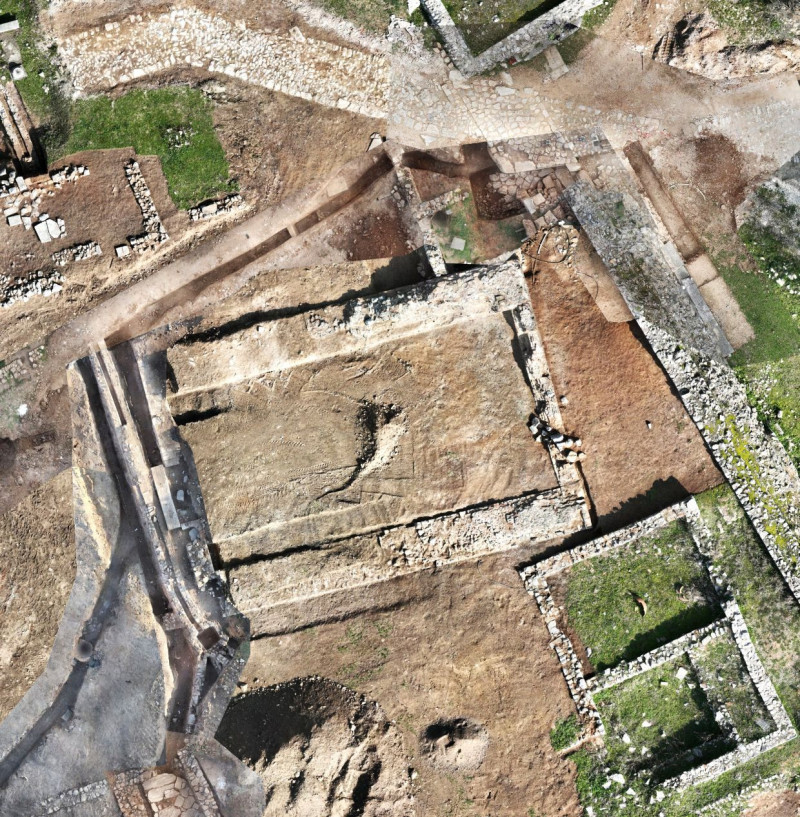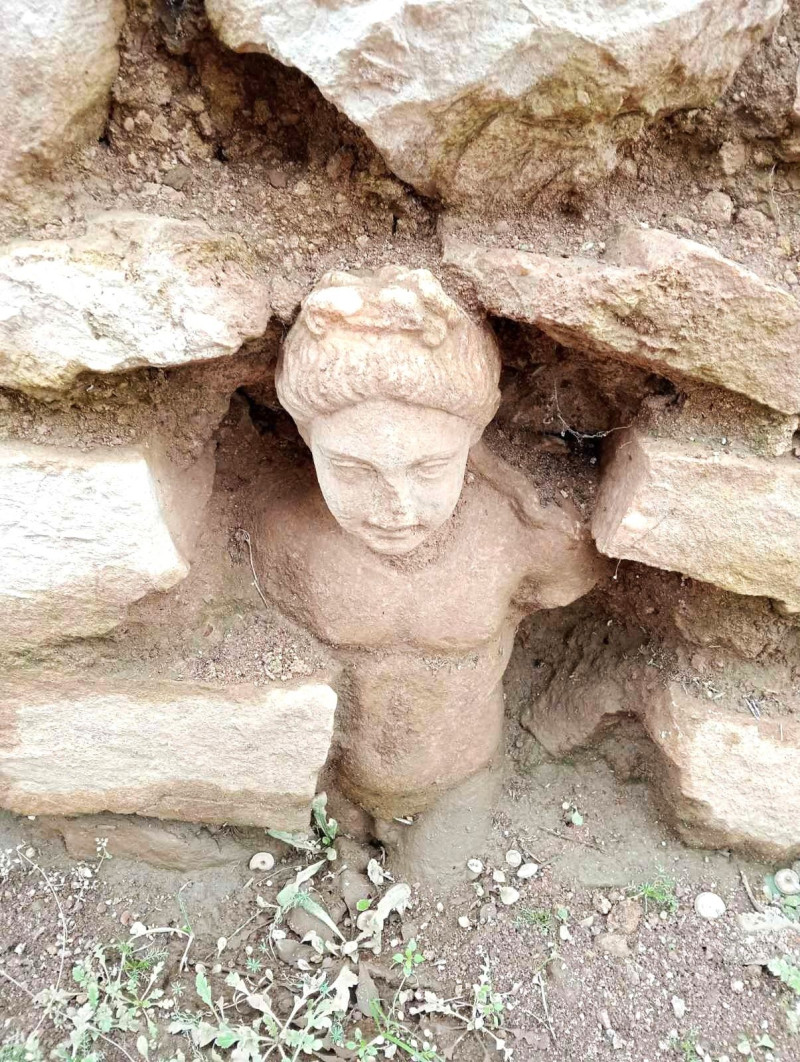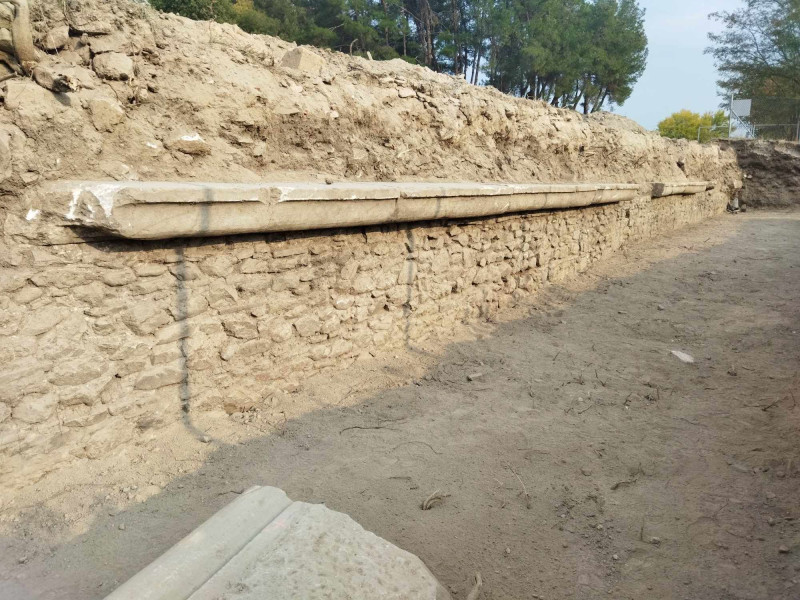The works brought to the surface small and big “secrets” of the ancient city, overturning data and revealing that Philippi was still inhabited after the 6th century AD
The evolution of the ancient city of Philippi and the daily life of its inhabitants are highlighted in an impressive way, on the occasion of the works carried out in the last year at the archaeological site for the installation of the fire safety network.
These works brought to the surface small and big “secrets” of the ancient city, which confirm the many decades of scientific archaeological studies on the brilliant buildings that adorned it and the justified great fame it acquired after its foundation (in 356 BC .) by the Macedonian king Philip.
A large public building, where there is a built-in statue of a young male figure, parts of the city streets, thermae (public baths) with Roman and early Christian phases, workshops and houses, are just some of what the archaeologists saw and recorded during the demanding works for the installation of the water supply and fire safety network.
“The fire safety project offered us new information about the significant history of the city and after the 6th century AD. invalidating the hypothesis until now that Philippi was abandoned during this period. During the work, we identified buildings dating from the 9th to the 11th century AD, which show that the city was inhabited even then”, emphasizes, speaking to APE-MBE, the director of the Ephorate of Antiquities of Kavala – Thassos, Stavroula Dadaki.
Impressive buildings are waiting to be discovered
“The important projects that started in 2019 for the unification of the archaeological site significantly changed its image. During this period, the fire safety projects offered us new data on the zoning of the ancient city and at the same time highlighted key positions for future new excavations to uncover even more monuments.”
Read more: The impressive Basilica II in Kavala, an unfinished temple restored in Philippi (photos)
“For example, one of the first buildings worth excavating is the one that was found near the ancient theater“, points out the Superintendent of Antiquities of Kavala and continues: “it is about one large buildingso we assume that it had a public character, on the north side of which a statuette of youth is embedded as a decorative element. The Romans used to shape shells and place statues inside. The project revealed the upper part of the trunk, but it needs to be fully excavated to see the whole picture. Also, it is to be investigated if this building is related to the ancient theater in the 2nd century AD, if it is a reservoir for the collection of water, or a grain store, or thermal baths.”
“Another interesting building, found during the work of the fire safety network”, points out Ms. Dadaki, “is located southwest of the palestra which we think were thermae (public baths). Part of a hall with a semi-circular configuration and orthomarble floors was revealed. The interesting thing is that it also has an early Christian phase, encroaching on a Roman road and giving us evidence of the city’s urban planning during the 6th century. A.D”.
“It’s just as interesting the wall that defines the northern side of the so-called Egnatia. It was revealed at some length. It has recesses in the form of niches, which were probably decorated with statues. A section of a similar wall was excavated by the French School of Archeology in the 1930s, north of the ancient market, but was not interpreted. If the research, which is certainly worth continuing, reveals that it is the continuation of the same wall, then we are talking about a monumental configuration that separated the two levels of the city”, concludes the Antiquities Superintendent of Kavala – Thassos.
What does the fire safety plan include?
The fire protection of the famous ancient city of Philippi, which includes iconic monuments such as the theater, the Second Basilica and the ancient market, was a priority for the Ministry of Culture.
The project, with a total budget of more than 2.5 million euros, was included in the Recovery Fund and is expected to be delivered by the autumn of 2025. It aims to strengthen the fire safety of the archaeological site to be visited (area of 60 hectares, compared to the 700 hectares that are all inside of the city walls), while at the same time respecting its archaeological value, as the works include modern technologies without affecting the sensitive monuments.
According to the study, on the edges of the archaeological site to be visited, two tanks were built that supply water to the network, while fire hydrants will be placed around the perimeter without altering the aesthetics of the surrounding area.
Also, at the suggestion of Stavroula Dadaki, together with the fire safety pipes, a water supply pipe and an additional electricity cable routing pipe were installed, so that there is the possibility of supplying drinking water and electricity throughout the archaeological site.
Source :Skai
I am Frederick Tuttle, who works in 247 News Agency as an author and mostly cover entertainment news. I have worked in this industry for 10 years and have gained a lot of experience. I am a very hard worker and always strive to get the best out of my work. I am also very passionate about my work and always try to keep up with the latest news and trends.













